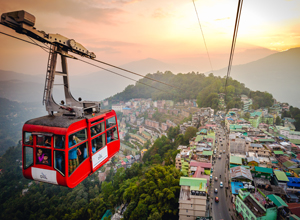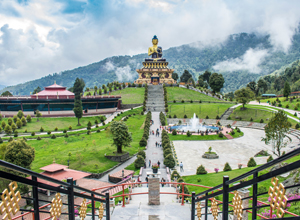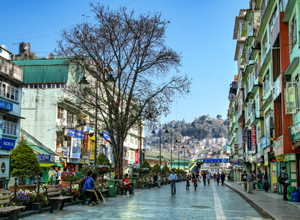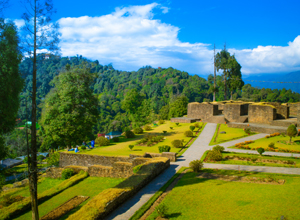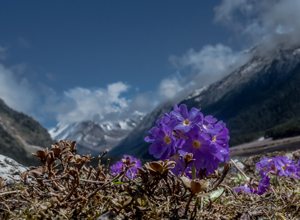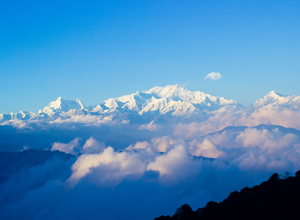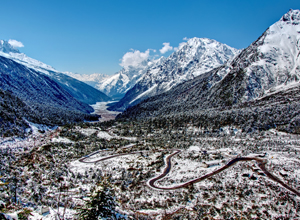Places To Visit In Sikkim
“Wonders do come in small packages!”, and if you want to witness this, you must visit the picturesque state of Sikkim. Tucked away in the lap of the magical Himalayas, though it is the second smallest state in the country, its prismatic beauty and mesmeric charm will make you wonder!
The gateway to the North-Eastern corridor of India, Sikkim not only boasts of its enchanting beauty, but also offers an engrossing list of things to do and places to visit as well. If you are planning to visit this charismatic state, here is a list of 15 best places to visit in Sikkim that makes it for a wonderful as well as blissful holiday:?
Suggested Read: Things To Do in Sikkim, How To Reach Sikkim & Best Time To Visit Sikkim
You might also like: Places To Visit in Bhutan & Things To Do in Bhutan
1. Gangtok
Believe it or not, but resisting the alluring charm and appeal of Gangtok is almost impossible for anyone! The capital city of Sikkim, Gangtok is nestled in the Eastern Himalayas and is one of the kaleidoscopic tourist destinations in the state.
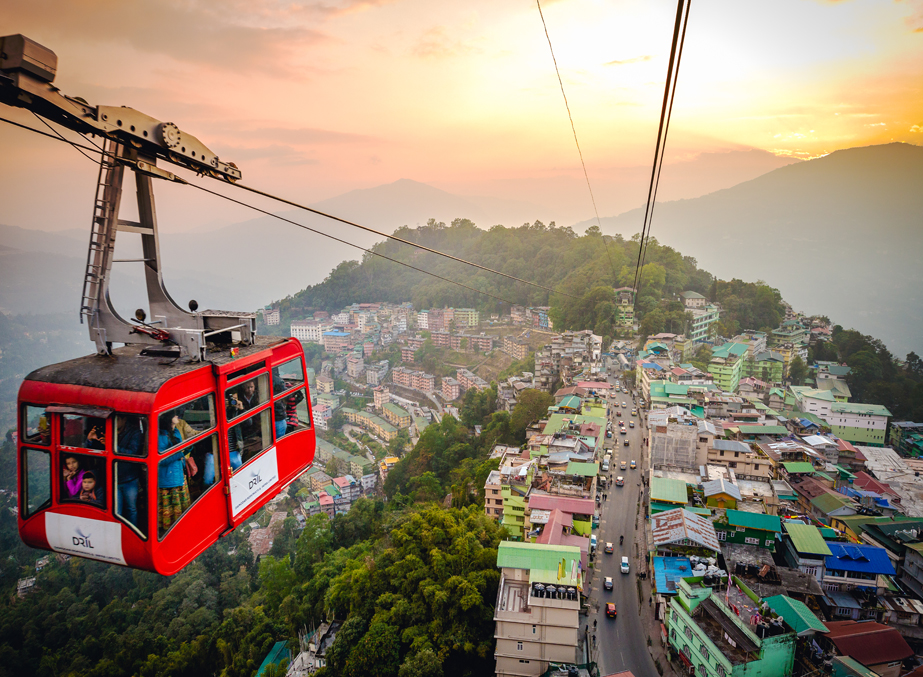
Whether you are looking for serene beauty, lush forests, gurgling rivers or mental peace, Gangtok travel packages will cuddle up your Sikkim holidays. For the nature lovers, a holiday in this scenic city is enough to fulfill all their wishes. On the other hand, for the adventure lovers, they can enjoy cable car rides, river rafting, go for mountain biking and several other activities in Gangtok.
Gangtok Travel Tips
The best time to visit Gangtok is between March to April and October to November.
It is advisable to avoid traveling during the rainy season as it can lead to roadblocks and you might not be able to enjoy sightseeing.
If you are someone who loves to stay in the hustle bustle of the market, you may choose to stay at MG Marg. However, if you are a peace-seeker, you may choose to stay away from MG Marg.
If you are visiting places like Nathula Pass, Baba Mandir, etc., know that they are set at a higher altitude hence there is a lack of oxygen in the air. Therefore, it is advisable to take adequate precautions before visiting. You may consult a doctor and carry along inhaler, especially if you have breathing problems or other medicines for vomiting, headache and motion sickness.
Gangtok Facts
Gangtok does not have its own airport. The nearest airport is Bagdogra airport in West Bengal. It is 135 km. from the city and it takes around 3 to 5 hours to reach Gangtok from there.
Kanchenjunga Mountain is the third highest mountain in the world with an elevation of 8,586 meters (28,169 feet).
MG Marg in Gangtok is India’s first spit and litter free zone.
Every year in the month of May, Gangtok hosts the International Flower Festival which displays a wide variety of roses, orchids, alpine creepers and seasonal flowers.
Main Highlights
Gangtok is home to beautiful Buddhist monasteries like Rumtek and Enchey.
It is the perfect place to experience serenity and peace.
It has many beautiful sightseeing places like Nathula Pass and Tsomgo Lake.
Suggested Read: How to Reach Gangtok
Sikkim Best Sellers
You can also check our tailor made Bhutan Tour Packages.
2. Yuksom
Located in the Western parts of Sikkim, Yuksom is the origin of several enthralling treks into the Himalayas or the magical Kanchenjunga. The once a capital of Sikkim, this hamlet is more known for its pristine beauty and rustic appeal.
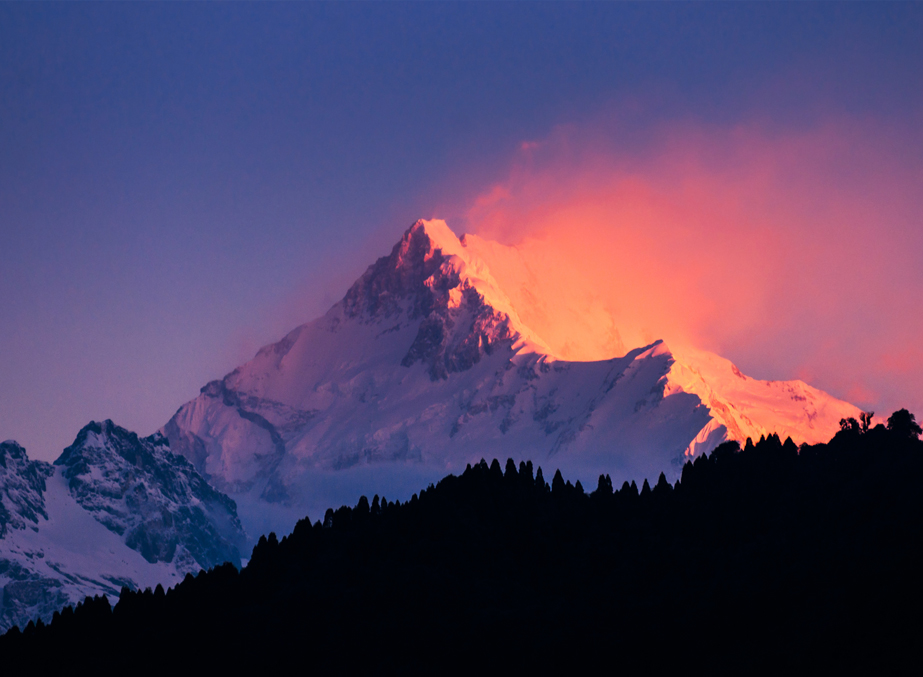
Also known as the ‘Meeting place of Three Lamas’, this Sikkimese village has recently started gaining tourism attention. Well, this is also the reason, you can expect pristine beauty and untouched nature in Yuksom. Home to the oldest monastery in Sikkim, this pictorial hamlet is one amongst the most peaceful and serene places to visit in Sikkim.
Yuksom Tips
Being located at a moderate altitude, the weather in Yuksom remains pleasant throughout the year. The best time to visit Yuksom is from March to June and September to October.
Although Yuksom has a motorable road, during rainy season travelling by public transport can be a hassle.
Yuksom Facts
Yuksom was the first capital of Sikkim in the 17th century and the coronation place of its first chogyal (king) in 1641.
Dubdi Monastery in Yuksom is the first Buddhist Monastery in Sikkim, established in 1701 by the Chogyar Namgyal.
Main Highlights
It is an extremely charming historical town blessed with jaw-dropping gorgeousness.
It is a perfect gateway to Mt. Kangchendzongha.
Yuksom features many entrancing trails.
The main highlight of the town includes historical monuments, ancient monasteries, tranquil waterfalls and serene lakes.
Suggested Read: Things to do in Yuksom & How to Reach Yuksom
3. Tsomgo Lake
On a visit to Gangtok, do not miss the chance to visit the Tsomgo Lake or the Changu Lake! Located only 38km from Sikkim’s capital, it lies at an altitude of 12,400ft and is one of the highest lakes in India.
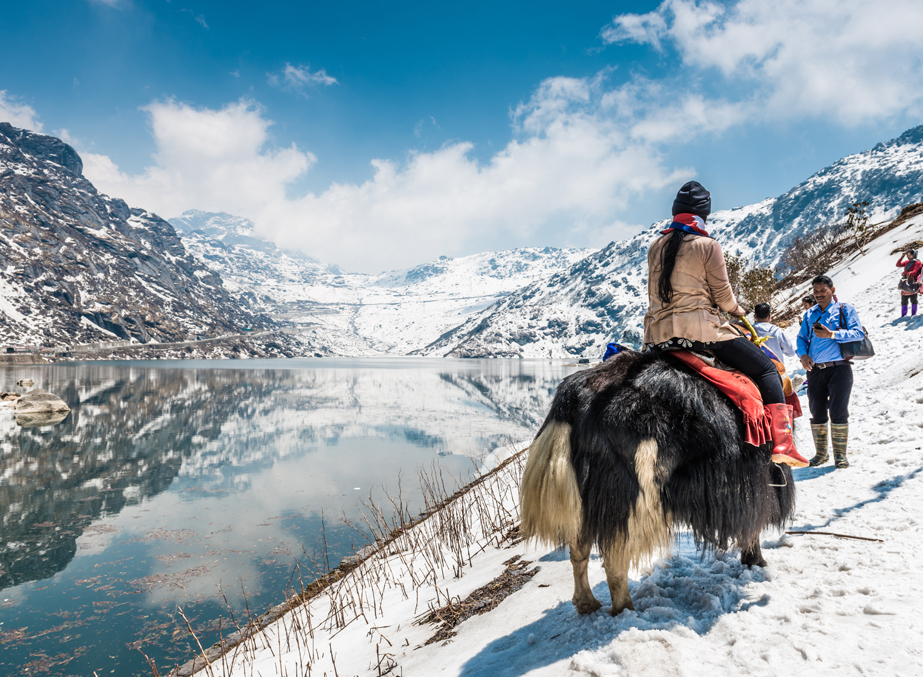
While the lake remains frozen during the winters, summer brings in a magical charm and appeal to Tsomgo. It is during this time of the year, the turquoise waters of the lake reflects the amazing views of the nearby peaks and the azure sky above!
Tsomgo Lake Tips
Tsomgo Lake is a day trip from Gangtok. It is advisable to leave for the lake early in the morning to reach on time and enjoy the views.
You will need a special area permit to visit the lake which can be obtained from the Sikkim tourism department at MG Marg Gangtok or you can ask your travel agent to arrange for the same. You will need your photo identity proof and two passport size photos to get the permit.
Beware of roadblocks due to heavy snow during the winter season.
Tsomgo Lake Facts
Tsomgo Lake (also called as Changu Lake) is one of the highest lakes in India set at an elevation of 3,753 meters.
The lake is considered sacred by the local people and the water here is believed to have medicinal value.
The surface of the lake reflects different colours in different seasons, making it even more alluring.
The lake remains frozen during the winter season.
Tsomgo Lake also serves as the venue for the Guru Poornima festival.
Main Highlights
During the winter season, travellers enjoy trekking along the lake coast, ice skating on the thick sheet of ice and yak ride on the frozen lake.
During the summer and autumn season, the sight of Primula flowers and other alpine vegetation growing near the lake is a key attraction.
Bird watchers flock here during October to catch a sight of the native birds waddling in the lake’s water.
Suggested Read: Lakes in Sikkim
4. Nathula Pass
The once a part of the historic ‘Silk Road’, a visit to Nathu La is a must in any of the Sikkim travel packages. One of the highest motorable pass in the world, this amazing pass is located at a towering height of 4,310m above the sea level and connects Sikkim with Tibet.
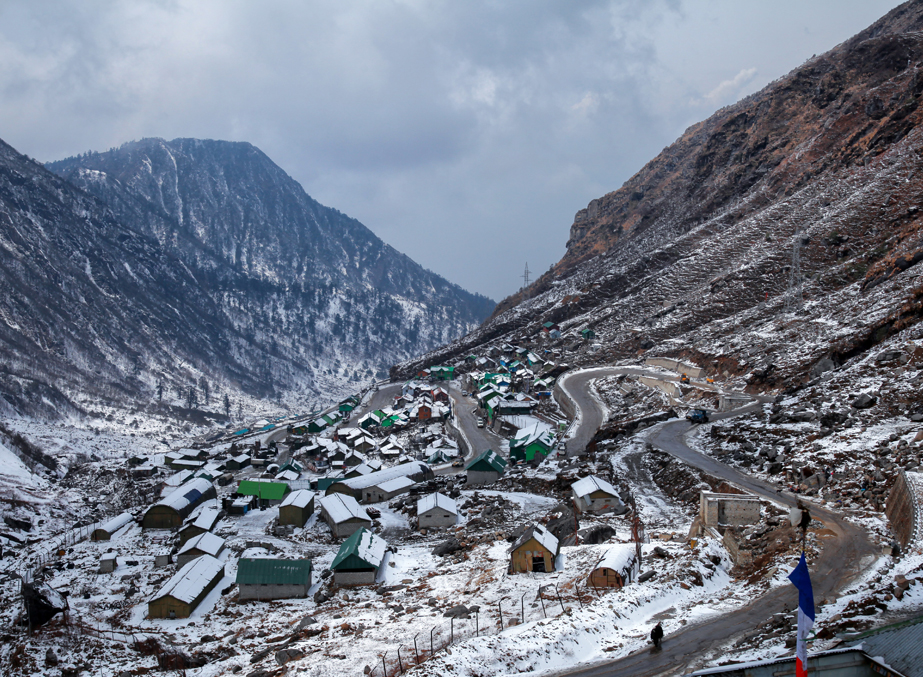
The pass is open to Indians; however, one has to obtain permission from the tourism department in order to visit this pass. And for the foreign national, they cannot make it to Nathu La.
NathuLa Pass Tips
Nathula Pass remains closed on Monday, Tuesday and Friday.
The pass remains inaccessible during winters due to heavy snowfall as the temperature drops down to as low as -250 C.
Beware of the winding roads leading to Nathula Pass which can lead to motion sickness. If you suffer from the problem, it is advisable to carry some medicines along.
You will need a special area permit to visit the place for which you will need your photo identity proof and two passport size photos. You can get the pass from zonal office or your travel agent can arrange for the same.
Photography isn’t allowed at the Nathula Pass.
Nathula Pass Facts
Set at an elevation of 4302 meters, Nathula Pass is one of the highest motorable roads in the world.
Nathula Pass connects Sikkim to China. In fact, it was once an ancient silk route which connected Lhasa in Tibet to the plains of Bengal.
Main Highlights
Nathula Pass offers splendid views of Chumbi valley of Tibet along with snow-laden mountains.
Driving in the hills is always fun. In fact, sometimes the drive is more enjoyable than the final destination. Same is the case with Nathula Pass. It is an experience to drive on the roads surrounded by snow on both sides while passing through picturesque beauty
Suggested Read: Other Tourist Attractions in Sikkim
5. Pelling
If you are an ardent fan of the captivating Himalayan Range, Pelling is the destination for you! It is from this Sikkimese town, one can have the best views of the Himalayas and the Kanchenjunga Peak, and can experience the best of their Sikkim holidays.
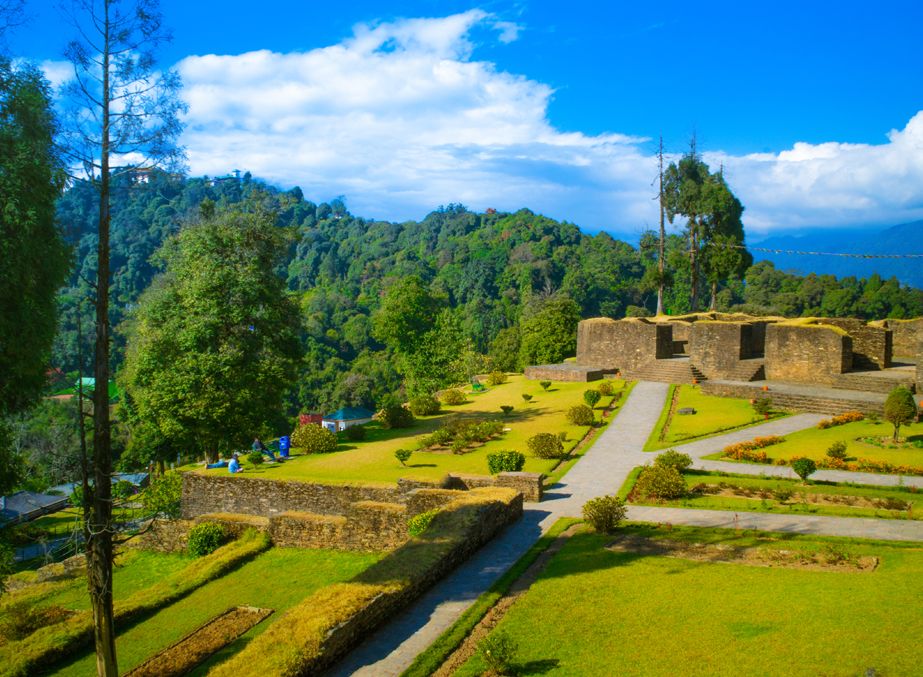
Located at a height of 7,200ft above the sea, this scenic town is bestowed with several waterfalls, breath-taking views, natural beauty and adventure options like rafting, kayaking, trekking, mountain biking and several others.
Pelling Tips
The climate in Pelling is moderate throughout the year, therefore one can plan a trip any time of the year. However, the best time to visit would be during the summer months between May and July.
Pelling Facts
The monasteries in Pelling are some of the oldest monasteries of Sikkim.
Since Pelling is located at a high altitude, it often receives snowfall during the winter months.
Pelling lies in the foothills of the Himalayas and the Kanchenjunga mountain ranges which helps you get a closer and much clearer view of these mountains.
Main Highlights
There are many amazing trekking trails that start from Pelling.
The main highlight of the place includes a view of the Kanchenjunga Mountains, many gorgeous waterfalls, bridges, ancient monasteries and so on.
The must-visit places in Pelling include Pemayangtse Monastery, Khecheopalri Lake, Rabdentse Ruins, Sanga Choeling Monastery and Kanchenjunga Falls.
Suggested Read: Things to do in Pelling & How to Reach Pelling
6. Lachung
Lachung has multiple reasons to make you fall in love with it! While its location at an enthralling height of 8,610ft makes it a popular snow-destination in Sikkim, its untouched and surreal beauty makes it one of the scenic as well as charming tourist places in Sikkim.

Located in the northern part of Sikkim, this quaint mountain village is adorned by the immaculate beauty of the Lachung Chu River and is also known for the Lachung Gompa. Though this village is one of the mostly visited regions in Sikkim, it still holds an alluring charm that can hardly be found in any other destinations.
Lachung Tips
Lachung becomes absolutely inaccessible in the monsoon season because of heavy rainfall and in the winter season due to heavy snow closing down significant routes.
Although scenic, the roads in Lachung are often not in good condition so have sufficient time in hand while you plan your visit.
Lachung Facts
Joseph Dalton Hooker, a British botanist had labelled Lachung as the ‘most picturesque village of Sikkim’ in his book ‘The Himalayan Journal’.
Lachung has innumerable fruit orchards and glacial rivers that add to its already existing charm.
Main Highlights
Lachung is an unexplored but stunning Himalayan village in Sikkim.
It is popular for its tall dark mountains, meandering glacial rivers, gushing waterfalls and striking fruit orchards.
Suggested Read: Best Time to Visit Lachung & Things to do in Lachung & How to Reach Lachung
7. Ravangla
Nestled amidst the Maenam and Tendong Hills, Ravangla is among the best places to visit in Sikkim; especially in the southern part of the state. A scenic town between Gangtok and Pelling, this hill-town also hosts some of the most popular treks in Sikkim.
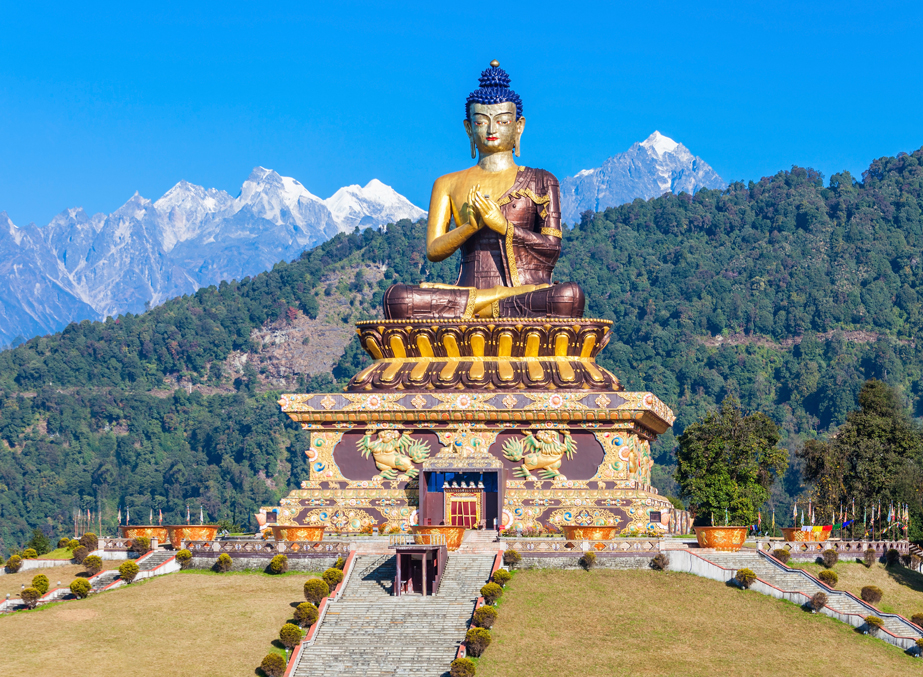
More popular as a paradise for the bird watchers, it is home to some of the most rare and endangered birds in the world. On a usual visit to Ravangla, you can spot dark-throated thrush, verditre flycatchers, blue whistling thrush, babblers, cuckoos and several others.
Ravangla Tips
The weather in Ravangla is very volatile so be prepared for the occasional rains. It is advisable to carry a raincoat or umbrella for protection.
Ravangla Facts
During the months from April and May, lots of the flowers are in full blossom in Ravangla.
Tourists come here to see the various species of migratory birds and for the breathtaking views of the peaks like Mt. Kanchenjunga, Mt. Pandim and Mt. Sinialchu.
Main Highlights
Ravangla is famous for its temples, monasteries, picturesque tea gardens, exotic flora and fauna, sightseeing spots, ethnic culture, snowy mountains, gushing waterfalls and adventure sports.
One of Sikkim’s most beautiful sights is Ravangla’s gigantic golden Buddha.
Suggested Read: Places to Visit in Ravangla & Things to do in Ravangla & How to Reach Ravangla
Sikkim Best Sellers
8. Rumtek Monastery
Counted amongst the largest monasteries in Sikkim, Rumtek Monastery is also one of the oldest monasteries in the state. An ode to the Buddhist cultures and traditions, this monastery is located near Gangtok and is also known as the ‘Dharma Chakra Centre’.
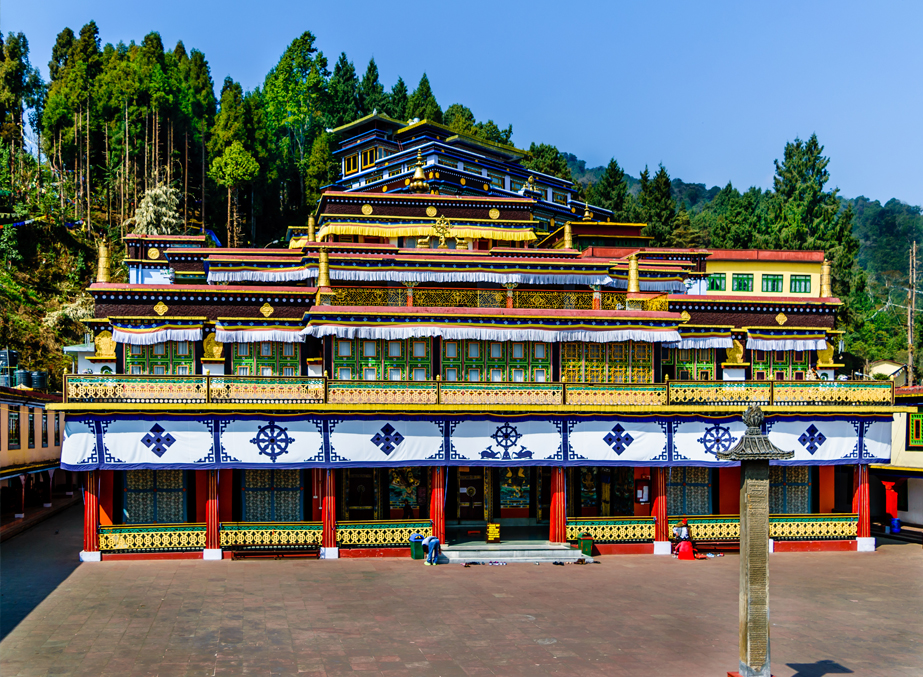
A testimony to the Buddhist architecture and teachings, it is a perfect place to attain mental peace and know more about Buddhism. Its spiritual appeal and grandeur makes it an integral part of any Gangtok travel packages!
Rumtek Monastery Tips
The monastery remains open from 9 am to 6 pm, so plan your visit accordingly.
Wear comfortable shoes as it is a long and steep walk from the taxi drop off location.
Cameras are prohibited inside the monastery.
If you want to catch a glimpse of monks doing morning prayers, plan to reach early.
Rumtek Monastery Facts
Rumtek Monastery popular worldwide for Kagyu teachings.
The architecture of the monastery is considered to be one of the finest in the world and resembles the original one in Tsurphu, Tibet.
The monastery houses some of the sacred items and rarest Buddhist religious artwork in the form of 1001 miniature golden models of Buddha, Thangkas and wall murals which were brought in the year 1963 by Rangjung Rigpe Dorje, 16th Karmapa.
Main Highlights
Golden Stupa at the Monastery, mystical ancient relics and down the hill river.
Suggested Read: Monasteries in Sikkim
You can also visit Bhutan Tourism website and check out best charming monasteries in Bhutan.
9. Namchi
Translated into the native Tibetan language, Namchi means the ‘top of the sky’. And on a visit to this magnificent Sikkimese city, this will be proved! Located around 92km from Gangtok and at a height of 1,675m above the sea level, it is also one of the most gorgeous cities in the state.
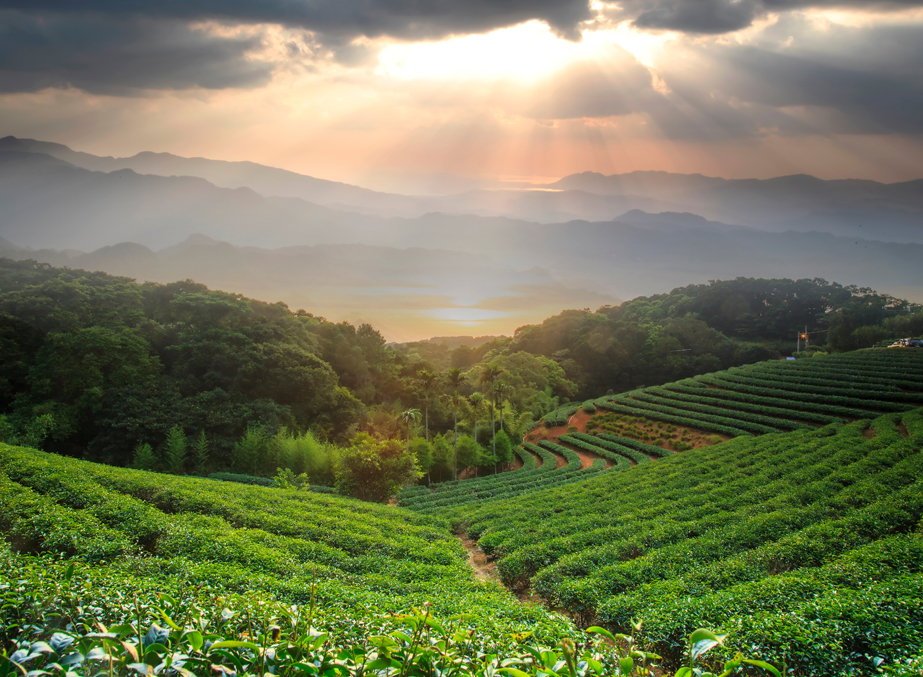
More than tourism, Namchi is more considered as a pilgrimage centre for the Buddhists. Amongst the important religious sites, the Namchi Monastery, Tendong Hill and Ralong Monasteries are the pre-dominant. The city also has a 108ft Lord Shiva statue and is visited a large number of Hindu devotees as well.
Namchi Tips
The best time to visit Namchi is from March to October.
If you are travelling during monsoon season, beware of muddy and slippery roads and landslides
Namchi Facts
Namchi is the capital of south Sikkim.
Namchi is home to 118 feet tall world’s biggest statue of the Buddhist Padmasambhava (holy saint of Sikkim).
It is also a well-known pilgrimage amongst the Buddhist culture.
Main Highlights
Namchi is known for its breath-taking scenic beauty and serenity.
Every year in the month of October, Namchi hosts the popular Namchi Mahotsav, a tourism, culture and food festival. In addition, it also hosts a flower festival displaying the beautiful blooms.
Suggested Read: Places to Visit in Namchi & How to Reach Namchi
10. Do-Drul Chorten
The largest Stupa in Sikkim, Do Drul Chorten was built in 1945 under the leadership of Truslshi Rimpoche. Holding a high prominence amongst all the religious sites in the state, this stupa is laced with 108 Mani Lhakor prayer wheels and is an ultimate place to connect with the essence of one’s inner-self.
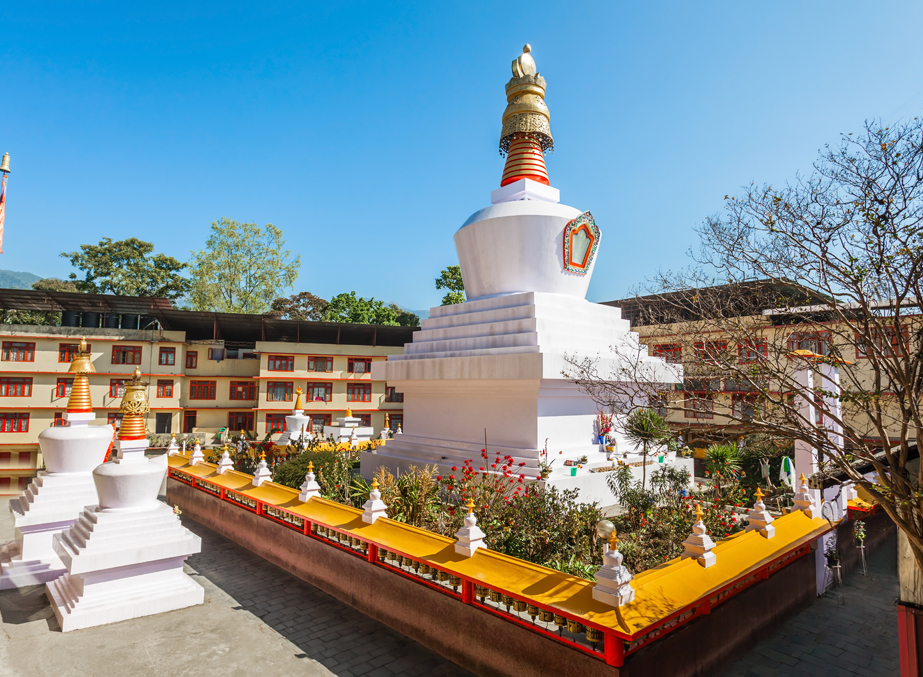
Do-Drul Chorten Tips
October and June is the best time to plan your visit.
It is open on all days of the week from 8 am to 6 pm.
The stupa is located very near to the Namgyal Institute of Tibetology and Gangtok Centre.
Do-Drul Chorten Facts
Do Drul Chorten was built in the year 1945 by Trullshi Rimpoche, head of the Nyingma order of Tibetan Buddhism.
It is considered as one of the finest monasteries in Gangtok.
Once this place was believed to be haunted by evil spirits. Later a very respected and great Guru Rinpoche blessed the place, cleansing it of all evil.
It has a total of 108 prayer wheels which have mantras inscribed on them in Tibetan.
The complex is so huge that it can house over 700 monks.
Main Highlights
It is an ideal place for history buffs, peace seekers and photography enthusiasts.
11. Jawaharlal Nehru Botanical Garden
Located within a close proximity with the Rumket Monastery, this lush and verdant botanical garden is the home to several rare and exotic species of plants and trees. Some of the orchids found in this garden are indigenous to only this part of the world and holds high medicinal and commercial value as well.
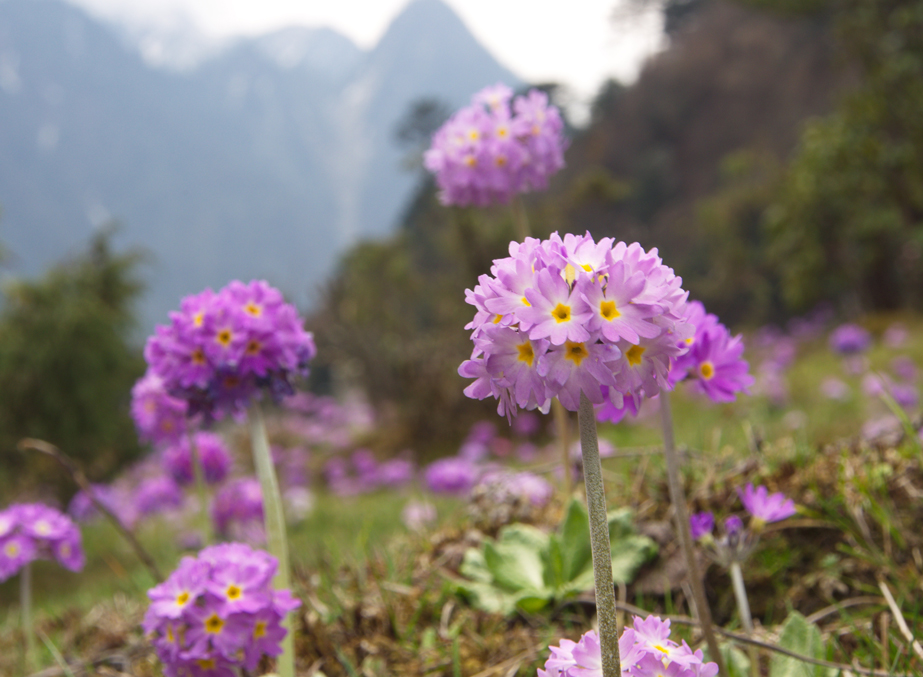
If you are a vivid nature lover, this colourful offering of the Sikkim travel packages will take you to a treasure island. And if you are visiting this garden with your family members; especially the younger ones, your visit will surely be cuddled up by the colourful ambience within the garden.
Jawaharlal Nehru Botanical Garden Tips
Jawaharlal Nehru Botanical Garden is situated very close to Rumtek Monastery.
The best time to visit the garden is from March to May when the garden is bursting with the vibrant colour of blooming flowers and October to Mid-December to catch a mesmerising view of surrounding valleys and snow-capped mountains.
The garden is open on all days of the week from 8 am to 6.30 pm.
Entry fee is Rs. 10 per person for adults and Rs. 5 per person for children.
Jawaharlal Nehru Botanical Garden Facts
The garden also has dense temperate forests of Oak and a beautiful lake.
Main Highlights
It houses numerous species of orchids and over 50 different species of tree, including many oaks.
From the hilltop, one can get an unparalleled view of the beautiful city of Gangtok with towering Himalayan Mountains in the backdrop.
Kids can have a gala time enjoying the merry-go-round, swings and see-saws installed at the park.
12. Zuluk
Touching a towering height of 10,000ft, Zuluk is one of the least discovered destinations in the entire of Sikkim. Located on the ancient ‘Silk Route’, this quaint Sikkimese village takes the pride of being a vintage point to enjoy panoramic views of the Mt Kanchenjunga.
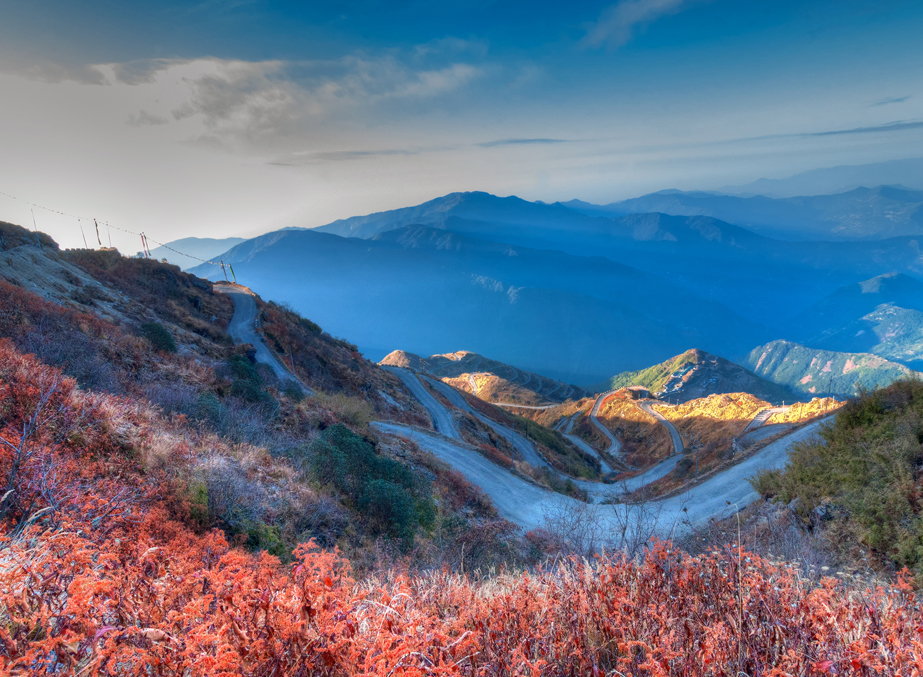
In addition to the magical beauty of this hamlet, it is also popular among the adventure lovers as the ride to Zuluk takes them through 32 hair-pin bends.
Zuluk Tips
The best time to visit Zuluk is between the months of August and September to experience a flowery summer or between the months of January and April to experience the freezing snow.
You will need a special area permit to visit Zuluk.
While visiting Zuluk by road, beware of the zig-zag roads. If you are not comfortable driving on such roads, it is advisable to hire a local driver.
There are no hotels in Zuluk. Homestays is the only option to stay in the village.
Zuluk Facts
The drive to Zuluk is considered as one of the best Himalayan drives in India.
Main Highlights
At 11,200 feet, Thambi View Point near Zuluk offers a panoramic view of Mount Kanchenjungha.
Another major highlight of Zuluk is its serene lakes. One of which is Kupup Lake aka Elephant Lake. It is also considered as one of the sacred lakes of Sikkim.
13. Namgyal Institute of Tibetology
Nestled amidst lush and evergreen thickets, the Namgyal Institute of Tibetology is an ideal centre to learn about Buddhist cultures and traditions. Established in 1958, this institute is in fact the home to the largest collection of Tibetan preaching outside Tibet, and this include relics from 11th and 12th century collected from different parts of the world.
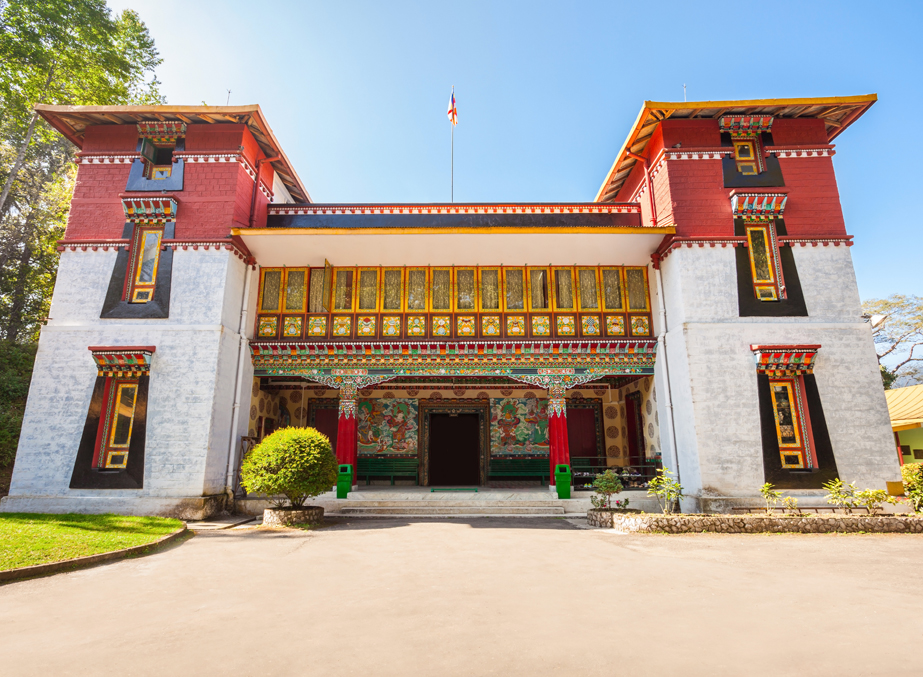
Namgyal Institute Of Tibetology Tips
It is open from 10 am to 4 pm, from Monday to Saturday.
Namgyal Institute Of Tibetology Facts
It is one of the largest repositories of Tibetan works, located outside the Tibet region. It displays some of the rarest and oldest collection of ritual objects, mementos, religious art, jewellery, Tibetan iconography, documentaries and books on Sikkimese tradition and culture.
There is also a library which boasts unique Buddhist tomes, some of which are a hundred years old.
Main Highlights
One of the striking features of the institute is its Sikkimese architecture.
The institute is surrounded by verdant forests of oak and birch.
14. Yumthang Valley
A visit to Yumthang Valleys it truly a colourful affair! Located at an elevation of 3,500m, this scenic valley is the home to several exotic, rare and wild flowers. It is often said, one who visits this quintessential valley, often gets pleasantly affected by its treacherous colours and alluring beauty!
Come the monsoons, the entire valley blooms at its best and displays the most enchanting colours of the nature. Primrose, cobra-lilies, louseworts and cinquefoils are some of the most commonly found species in Yumthang.
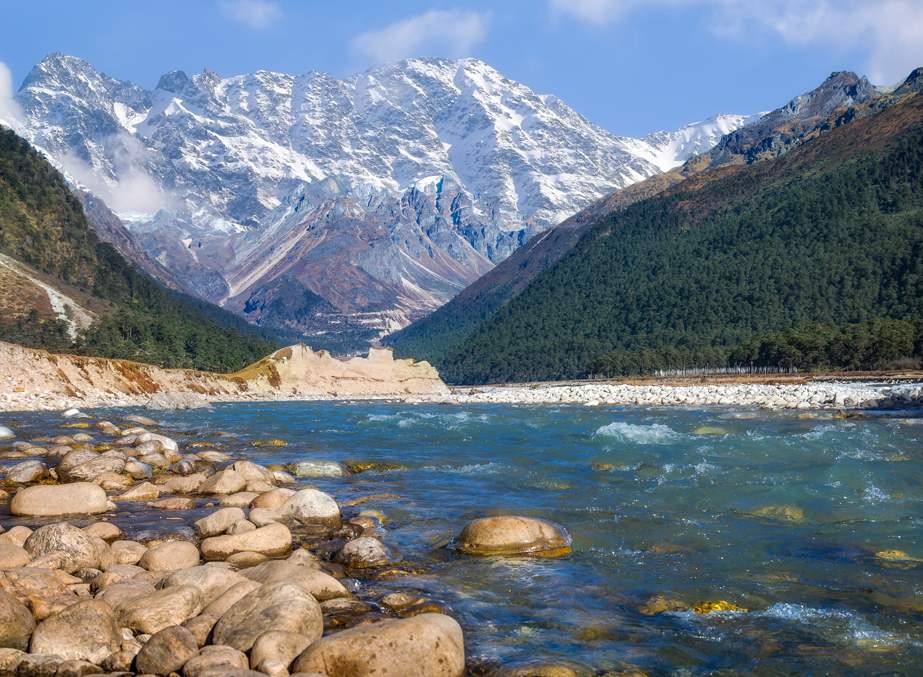
Yumthang Valley Tips
The best time to visit the Yumthang Valley is between April end and mid-June to witness the flowering season.
The valley usually remains closed from December to March due to heavy snowfall.
You will need a special area permit to visit the Yumthang Valley. Keep two passport sized photographs and a valid Identity proof handy as you will need it while obtaining the permit.
It is advised to not disturb the wildlife in the valley.
While visiting any monastery, do not make a loud noise or disturb people around.
Carry sufficient cash as there are no ATMs in the region.
Do not forget to carry medicines for headache, motion sickness and common cold.
Do not forget to carry sufficient woollen clothes as it is usually cold in the valley. You can even rent an overcoat, gloves and snow boots from a local vendor.
Yumthang Valley Facts
The Himalayan Journal by Dr. Joseph Hooker compares Yumthang to the valleys of Switzerland.
The Yumthang Valley is popularly known as the ‘valley of flowers’. Some of the beautiful Himalayan flowers that you can find in the Yumthang Valley during the spring season are rhododendrons, poppies, primulas, cobra lilies, louseworts, and irises.
Yumthang Valley is located very close to the China border.
Main Highlights
It is a nature sanctuary with free-flowing rivers, rolling meadows, yaks and hot springs.
15. Gurudongmar
Last, but not the least in this list is the Gurudongmar Lake! One of the highest fresh-water lakes in the world, this gorgeous place to visit in Sikkim is located at a towering height of 17,800ft and is also known as Tso Lhsmo Lake.

Considered as a sacred lake, the legends say that though this lake remains frozen during the winters, one of its portion never freezes. No matter, how extreme is the weather, this certain portion blessed by Guru Padmasambhava never freezes and thus its water is considered holy by the devotees.
Gurudongmar Tips
Since the lake is situated at a height of 17,800 feet, the oxygen level is very low which can cause severe breathing and other health issues. Therefore, it is advisable to consult a doctor before you visit the place and carry sufficient medicines as prescribed by the doctor.
Avoid smoking or drinking before you head to this place as it can make you sick.
It is extremely windy and chilly here, hence carry sufficient warm clothes.
During the winter season (mid-December to February), the roads remain blocked due to heavy snowfall.
The best time to plan to visit is during October, November, April end and early May.
Begin close to Indo-China border, you will need a special area permit to visit the lake.
Gurudongmar Facts
Gurudongmar Lake is one of the highest altitude natural lakes in the world.
The water of the lake never freezes completely even when the temperature is as low as -20 degree Celsius.
It is a common belief among the locals that drinking the lake water could resolve fertility issues of women.
Main Highlights
April to May is the flowering season and during this time the places get a surreal view.
Do not miss the spectacular view of Gurudongmar Valley.
Suggested Read: Popular Lakes in Sikkim
People also Read Sikkim
People also Read Bhutan

Subscribe to us
Subscribe to our newsletter and stay updated

Request a call back
Our experts would love to create a package just for you!
Sikkim Travel Information at a Glance
Find the authentic information on how to plan a hassle free tour to Sikkim. Travalghar puts together for you relevant details on how to reach Sikkim along with information on different means of transportation and the best time to visit. Also explore the different attractions and destinations in Sikkim with the help of our map, made easy for you to navigate.
- About sikkim
- Sikkim Darjeeling Tour Packages
- Visiting Sikkim in Winters
- South Sikkim
- Sikkim Tourism Destinations
- How to Reach Sikkim
- Visiting Sikkim in Summers
- West Sikkim
- Sikkim Tourist Attractions
- Sikkim Travel by Road
- Visiting Sikkim in Monsoon
- East Sikkim
- Best Things to Do in Sikkim
- Sikkim Travel by Train
- Darjeeling Gangtok Tour Packages
- North Sikkim
- Best Time to Visit Sikkim
- Sikkim Travel by Air
- Entry Formalities to Sikkim
- Trekking in Sikkim
- Honeymoon in Sikkim
- Sikkim Tourism Map
- Restricted Area Permit
- Hill stations in Sikkim
- Gangtok Tour Packages
- Sikkim Tour Packages
- Places to visit in Sikkim
- Do's and Dont's

